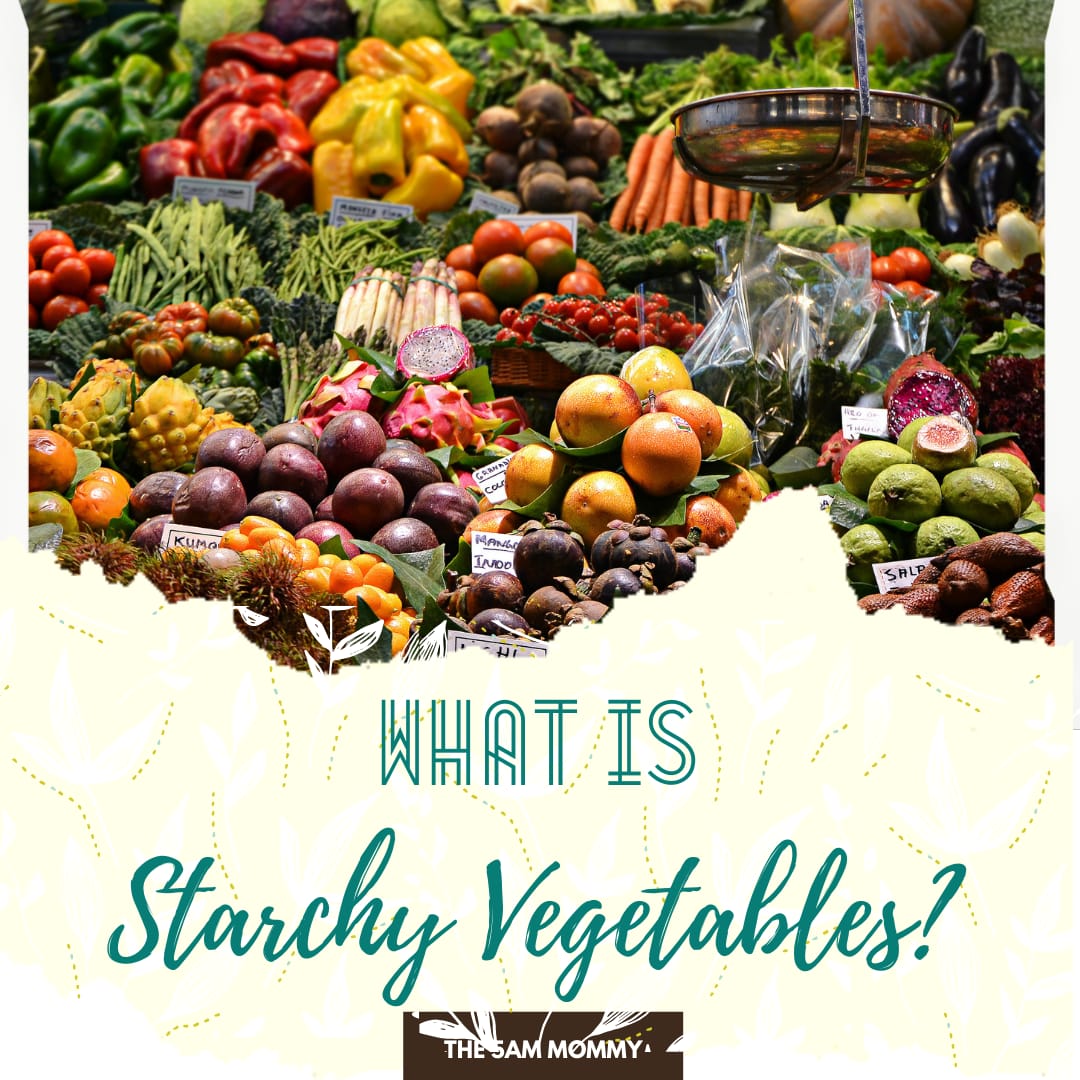
30 Mar What are Starchy Vegetables? Do You Need It?
Vegetables should be consumed on a daily basis to maintain healthy health. It has high nutrition, fiber, vitamins, and minerals which protect us from a lot of health concerns. However, based on nutrient composition, some particular fruits and vegetables may be more or less beneficial for maintaining a healthy weight. So I’m going to provide a few tips for getting more veggies into your diet at each meal.
Starchy and non-starchy veggies are the two basic varieties of vegetables. As the term implies, starchy vegetables have more starch than non-starchy vegetables. They also have less fiber, so you may not feel as satisfied as you would with non-starchy vegetables. On the other hand, non-starchy vegetables have more fiber and less sugar than their starchy counterparts. The main difference between the two is the overall amount of starch, which is a form of carbohydrate.
Table of Contents
What is starch?
Starch is a natural carbohydrate that is one of the most important sources of nutritional energy for humans. Starch is an essential component of a healthy diet and offers numerous healing properties. But, if consumed in large quantities, it might be harmful to one’s health. According to research in 2019, low-quality, starchy meals make up as much as 42% of the average American’s diet.
US health agencies recommend eating 2.5 cups of vegetables each day, including both starchy and non-starchy vegetables.
Starchy and non-starchy veggies are high in calories and carbs
Compared to non-starchy vegetables, starchy vegetables have 3-6 times more calories and carbs. So, it’s important to eat starchy vegetables moderately if you have diabetes or want to lose weight.
Starchy and non-starchy veggies are high in fiber
Both starchy and non-starchy vegetables are high in fiber content. Most starchy vegetables contain 4–6% fiber, which is about 2–4 grams of fiber per 1/2 cup (70–90 grams) or 6–14% of the Reference Daily Intake (RDI). According to research, it can help prevent digestive conditions like inflammatory bowel disease, high blood sugar levels, and the risk of heart disease and diabetes.
For these reasons, eating a range of starchy and non-starchy vegetables to meet your fiber needs can improve your digestive as well as overall health.
Foods that are high in starch
Starchy foods are a healthy option and the primary source of a variety of nutrients. Simply keep an eye on the extra fats you use when cooking them, as this will raise the calorie count.
White Rice: 44 g of starch in a bowl of white rice. Processing white rice removes the fiber that would provide the majority of the nutrients. In the United States, however, rice is frequently supplemented with minerals, including iron and Vitamin B.
Corn: Corn is one of the starchy foods that is consumed on a routine basis. One cup of yellow maize has 110 grams of starch, which may seem excessive. Nonetheless, corn is high in fiber and contains key nutrients – Vitamins B, making it a nutritious complement to your diet when consumed in moderation.
Pasta: Each cup of cooked pasta contains 43 grams of carbs, with 36 grams of starch. Pasta is a basic carb, which allows your body to break it down rapidly into glucose (energy), causing a blood sugar surge. Simple carbs, on the other hand, don’t help you feel full for very long, so you’re more inclined to overeat and put on weight.
Low-Starch Substitutes
Whole-grain carbs release sugar from the blood more slowly compared to refined carbs, resulting in enhanced wellness. Some of these foods have a low starch content:
Pasta made from whole grains: If you want to eat fewer carbohydrates, whole-grain pasta does have a greater fiber to starch proportion than refined pasta.
Rice (brown): Brown rice contains 40 grams of starch per bowl. It has more fiber than white rice, so it will make you obese quickly and take longer to elevate your sugar levels.
Russets: Choose a low-starch kind of potato, such as russet, to cut down on your starch consumption. To eliminate some of the starch from potatoes, soak them in cold water for 2 hours.
Monitor the intake of starchy foods
Starchy food is a good form of energy and is the main source of nutrients in our diet. It contains fiber, calcium, iron, and vitamin B. Few people think starchy foods are fattening, but they have fewer calories than fat. Most carb diets can add on starchy vegetables like potatoes and sweet potatoes, as long as portion control is maintained. Track your intake to monitor the calories or grams of carbs that you’re consuming.
Tips for eating more starchy foods
These choices will assist you in increasing the number of starchy nutrient-dense foods.
Breakfast
- Choose whole-grain cereals.
- Plain porridge with fruits.
- Whole oats with fruit and low-fat, low-sugar yogurt.
Lunch and Dinner
- A baked potato.
- Reduce the amount of sauce and increase the amount of rice or pasta.
- Seeded, wholemeal, and granary breads are all good choices.
FAQ’s
Are starchy vegetables healthy?
Starchy veggies are a great source of diet C, B nutrients, and potassium. Carbohydrates provide us with strength, but they increase blood glucose levels quickly and significantly. That’s why the American Diabetes Association (ADA) recommends ingesting starchy carbohydrates sparsely.
Are potatoes healthy?
Potatoes are an amazing supply of fiber, which lets you shed pounds by keeping you satiated longer. Fiber can help prevent heart disease with the aid of maintaining cholesterol and blood sugar ranges in check. It also works to prevent illnesses and nutrients that help your body function properly.
Which is worse: starch or sugar?
A study by the American Academy of Pediatric Dentistry has observed that starchy foods are worse for young teeth than sugary foods. This is because researchers state that, each time when the starchy materials get directly exposed to the teeth, it may cause damage to the teeth.
What are some non-starchy vegetables?
The following is a list of non-starchy vegetables that are commonly consumed:
- Baby corn
- Beans
- Bean sprouts
- Cucumber
- Onions
Are there any side effects of starch on our bodies?
Starchy foods could have a big impact on your digestion. Starchy foods’ elements can impact their digestibility and gastric metabolic effects, which could be linked to the risk of diabetes and obesity in the long term.
What are starchy vegetables?
Here are some starchy vegetables list:
- Beans
- Chickpeas
- Corn
- Lentils
- Peas
- Potatoes
Conclusion
Both starchy and non-starchy vegetables have an impressive amount of vitamins, minerals, and fiber. Starchy vegetables have more carbs, calories, proteins, and a resistant amount of starch. Starchy and non-starchy vegetables are delicious as long as they are cooked in the right and healthy manner.
Reference
https://www.nhs.uk/live-well/eat-well/starchy-foods-and-carbohydrates/
https://pubmed.ncbi.nlm.nih.gov/26394033//
https://www.verywellhealth.com/list-of-starchy-vegetables-1087454
https://journals.plos.org/plosmedicine/article?id=10.1371/journal.pmed.1001878

No Comments